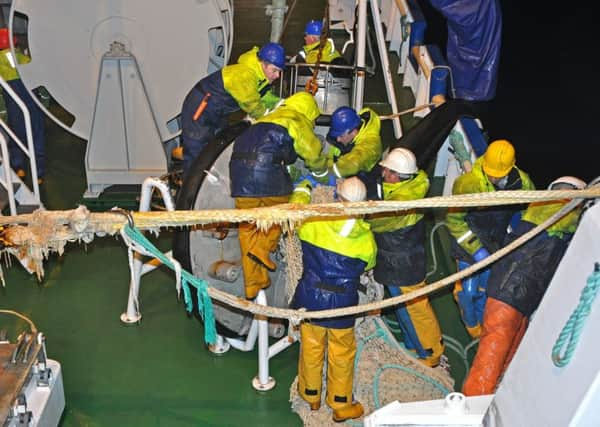How proper management of the humble blue whiting can sustain much-needed Scottish jobs


The fish in question is blue whiting, a mysterious and abundant shoaling fish that occurs in deeper water to the west and north of Scotland. The Norwegians have been fishing for blue whiting since the 1970s, with Scottish boats first entering the fishery not long after.
Indeed, in the late 1970s and early 1980s, blue whiting was hailed as the fish that could be the saviour of some sections of the Scottish fishing industry following the collapse in herring stocks.
Advertisement
Hide AdAdvertisement
Hide AdSuch starry-eyed status never materialised – probably because catches are seasonal and it is also a technically difficult fishery to operate in. But despite this, it is nonetheless an important one for Scotland today.


A member of the cod family, the blue whiting is a medium-sized fish, typically about 22 to 30cm in length, although they can grow larger.
They are rather unusual in that, unlike their cousins, cod and haddock – which are found on the seabed – blue whiting are largely midwater swimmers and behave more like pelagic fish such as herring and mackerel. They form large shoals at depths of around 400m along the continental shelf.
Blue whiting are found off the west of Ireland in the early part of the year where they congregate to spawn before gradually migrating northwards past Scotland and up into Faroese and Norwegian waters to spend the summer.
For Scottish mackerel and herring fishermen, blue whiting forms an important annual eight-week fishery that generally starts in February. It is particularly important for keeping our onshore pelagic processing facilities busy in what would otherwise be a quiet period when there is no mackerel and herring fishing going on. In short, blue whiting helps support vital employment in both the catching and processing sectors.


The fishery is a very selective one with virtually no bycatch of other species. Whilst most of the blue whiting caught by other nations in this international fishery is used for fishmeal, the blue whiting targeted by the Scottish fleet is destined for human consumption. Once landed, the fish are packed and frozen and exported to West Africa. Blue whiting therefore plays an important role in ensuring global food security by supplying a nutritious and relatively cheap source of protein.
It is also a fishery that needs to be looked after and the recent history is a cautionary tale of the importance of careful management. Catches gradually increased during the 1990s and peaked by the early 2000s.
But the stock couldn’t handle this level of fishing pressure and quickly dwindled. Now, with more controlled international management, the stock has bounced back and is once again relatively abundant. Scottish fishermen are aware of the need to ensure careful catch controls and sensible sustainable management, and continually press this point during international negotiations.
Advertisement
Hide AdAdvertisement
Hide AdSuch work towards responsible catching led to the blue whiting fishery being independently certified last year as sustainable under the prestigious Marine Stewardship Council (MSC) ecolabel standard. Fishermen in Scotland, Ireland, Denmark, France and the Netherlands collaborated to achieve the MSC certification, which applies to two-thirds of the total catch of North East Atlantic blue whiting, and is valid for five years.
Under the MSC’s science based standard, the fishery must be independently recertified every five years to demonstrate that it is still sustainable and well managed.
The main fishing nations are historically the EU, the Faroe Islands, Russia and Norway, and the stock is managed on a multi-lateral level because the fish is highly migratory. Such international management is not without its problems.
Scottish fishermen were particularly perplexed when Norway was recently given some of the EU blue whiting quota shares as part of international fisheries negotiations. Similar negotiations with the Faroese have also resulted in their extra flexibility to catch blue whiting in our waters.
With Brexit now looming, Scottish fishermen are hopeful that this will put them in a stronger position at the international negotiating table so as to ensure a fairer deal in catching opportunity based upon scientific advice.
The danger is that once you lose your share allocation, it will be gone forever. And with blue whiting spending so much of their time in Scottish waters, this would be an unjustifiable kick in the teeth for our economy.
Ian Gatt is secretary of the Scottish Pelagic Sustainability Group